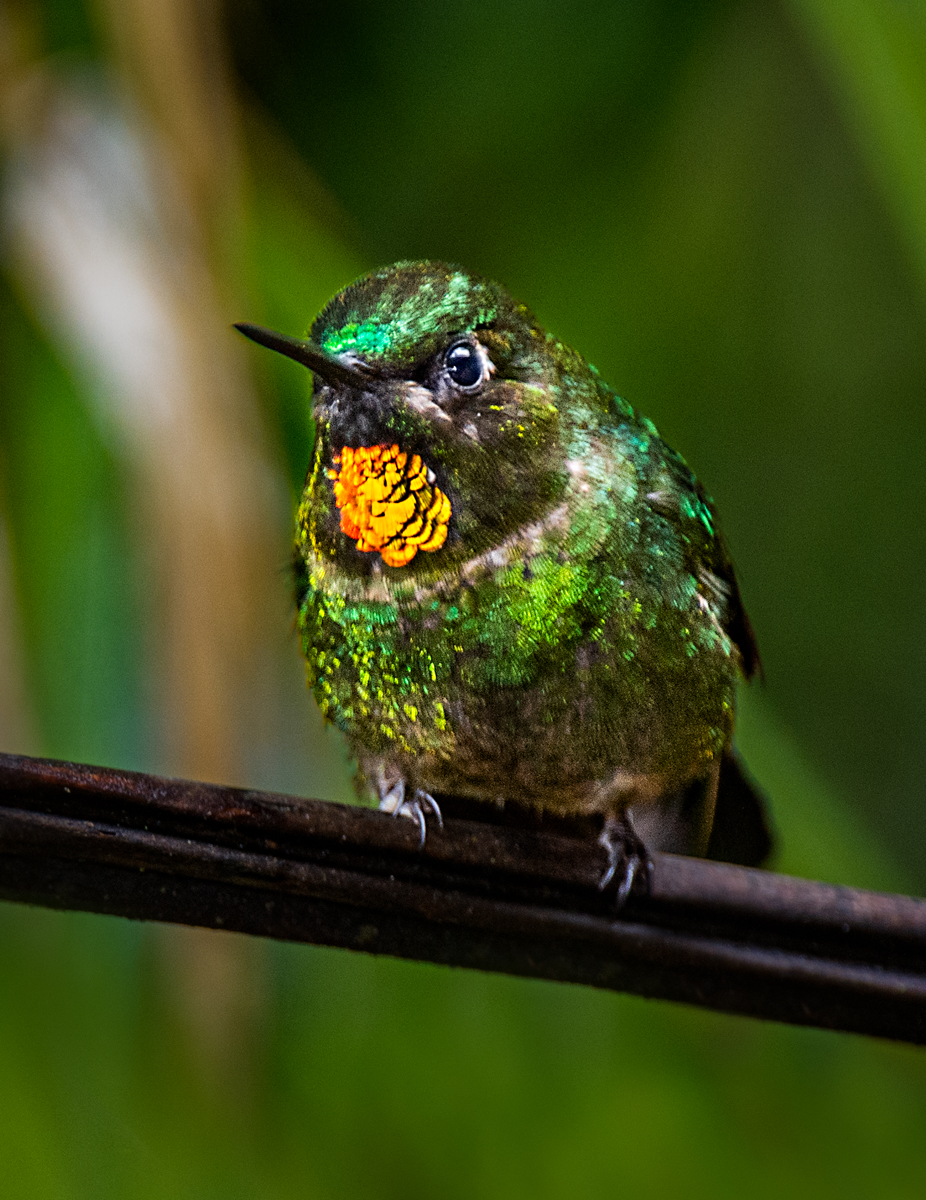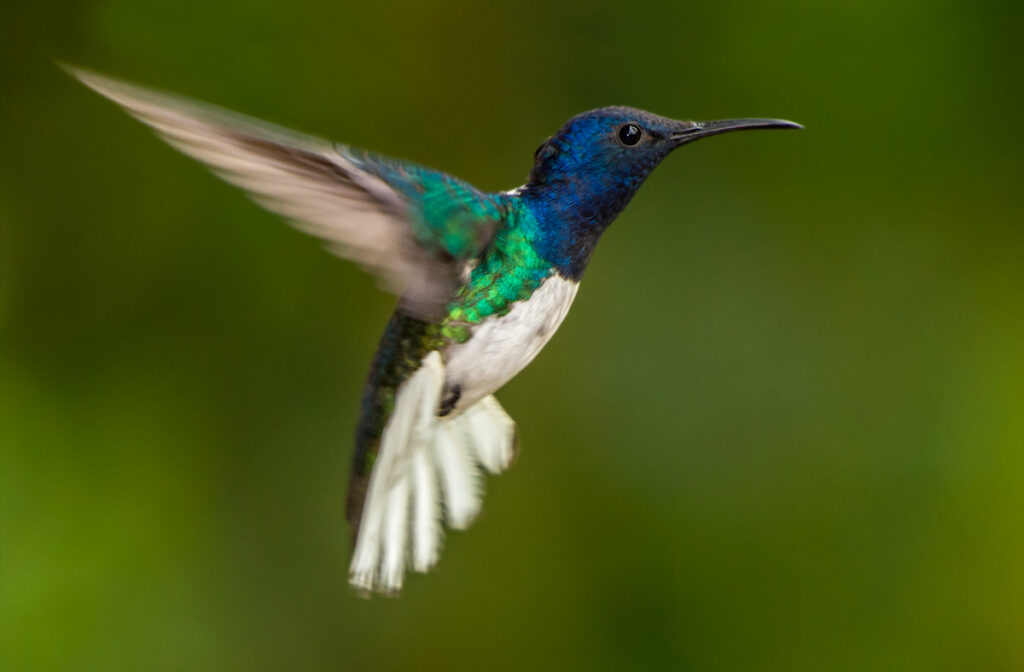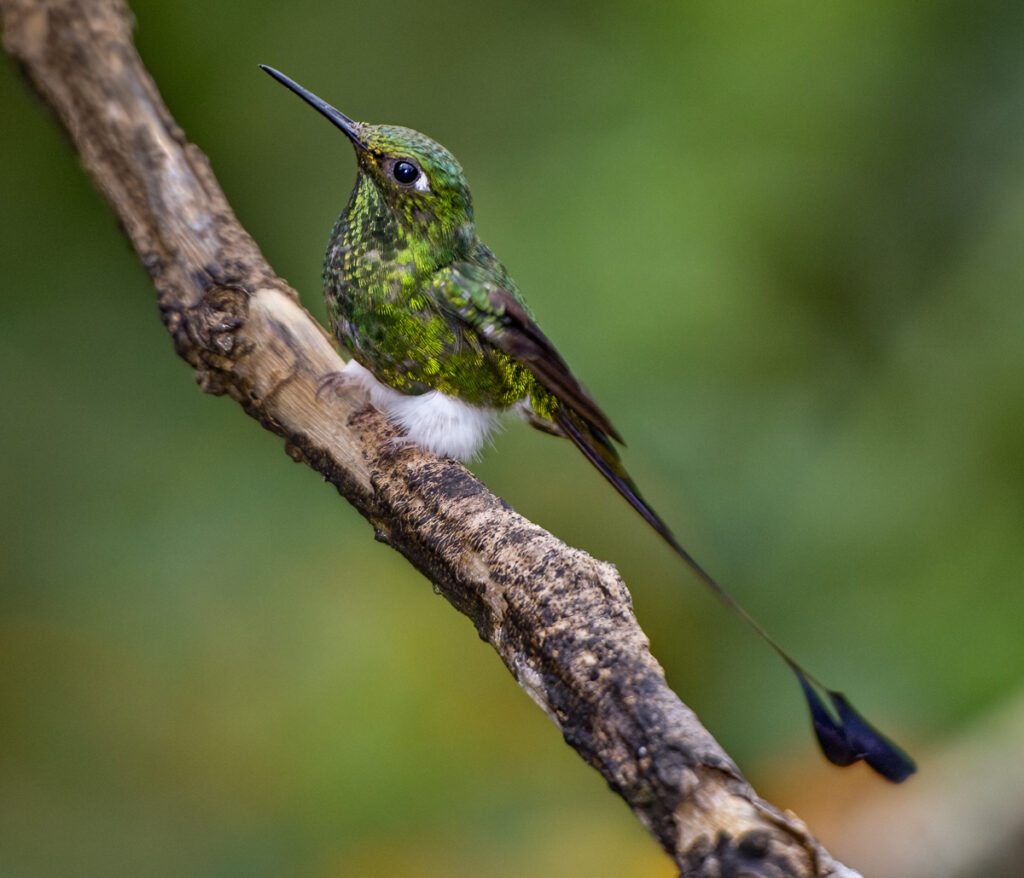
The hummingbird family is a big one – 360 species, in fact (the largest of bird families, the Tyrannidae or the tyrant flycatchers, just pips it to the post at 400 species). Hummingbirds are found only in the Western hemisphere, with almost half of all species living in the “equatorial belt” between 10 degrees north and south of the equator.

Hummingbirds fascinate pretty much everybody, not just birders. They are simply mesmerizing to watch as they flit and hover, beating those absurdly fast wings at an average rate of 50 times a second, with some species clocking that in at 80. It’s not just the way they move – their names sound like they have been plucked from the pages of fairy tales bound in leather and twine: Flame-throated Sunangel, Rainbow Starfrontlet, Golden-tailed Sapphire. These names beautifully manage to convey the myriad of plumage colors and styles. Hummingbirds iridesce – their feathers throw light wavelengths back to our eyes from all across the spectrum via something called structural coloration. The feathers of many birds are colored by pigmentation gleaned from their food, but hummingbird feathers are constructed in such a way that pockets of air and keratin align as they fly and sit, and sometimes we see their colors differently, depending on where we view them from. Capturing hummingbirds in photography is an art, one which Owen has had plenty of opportunity to master during all of his trips out to find these jewels with wings.

All 360 species that are currently identified in the world today are in the New World, with a vast range from Tierra Del Fuego province in Argentina to southern Alaska; they can be found in deserts below sea level and zooming high above most of us some 16,000 feet up in the Andes. The majority of them live in forested areas and meadowy grasslands, however, where access to plenty of flowers can be found, providing that sugar-rich diet they are famed for sucking up through their decurved bills.

The Equator Country
Owen has visited seven sites and reserves in the South American country of Ecuador, each with a name as evocative as the birds he went there to see. Septimo Paraiso Lodge sits right on the equator, 84km northwest of Ecuador’s capital city, Quito, and provides bird-watching opportunities for everyone from novice to expert. The range of species in this northern part of South America is at its most diverse, and Owen currently has 86 photographs of some of those stunning aeronauts from the lodge up on this website. One image taken there of the White-booted Racket-tail, a hummer from the “brilliants” tribe, shows a male adult’s elongated outer rectrices, or tail feathers, glistening petrol blue. Those long feathers never cross over each other, and only the flags at the end slightly overlap.

Another lodge, the Buenaventura Umbrellabird Lodge and Reserve hunkers down in the southwestern corner of the country, originally established to protect the El Oro Parakeet’s home range, and is home to some of the world’s most stunning birdlife, including the White-necked Jacobin. In one of Owen’s photos, the male Jacobin’s wings are captured in a blur, the unmistakable dark blue head and chest and bright green back dazzling against the pure-white belly and tail, fanned out for balance and maneuverability. We hope you enjoy seeing these unique and beautiful birds.


